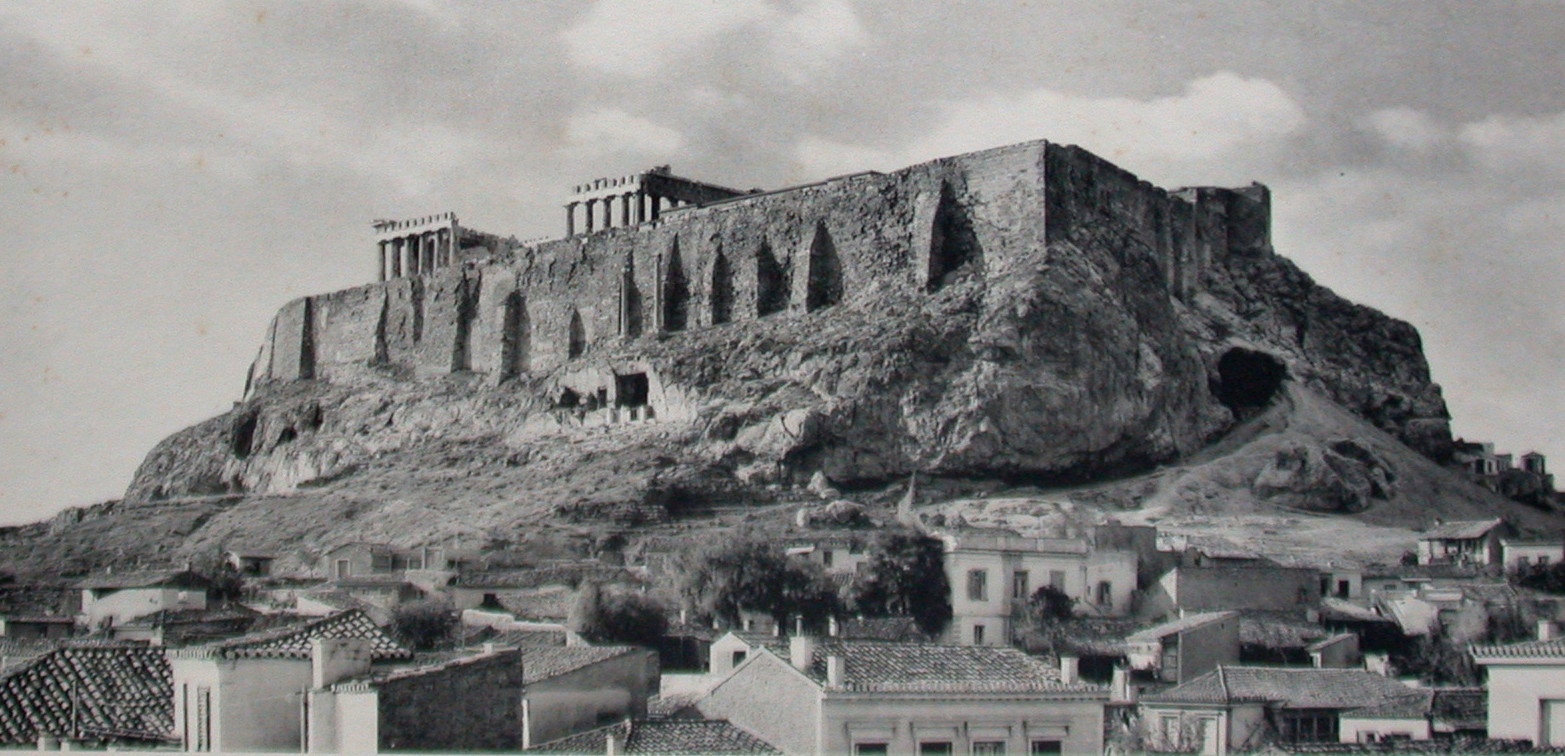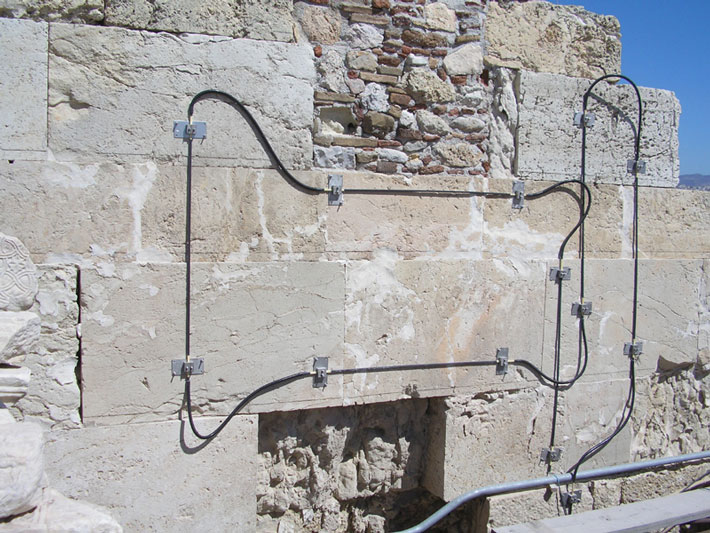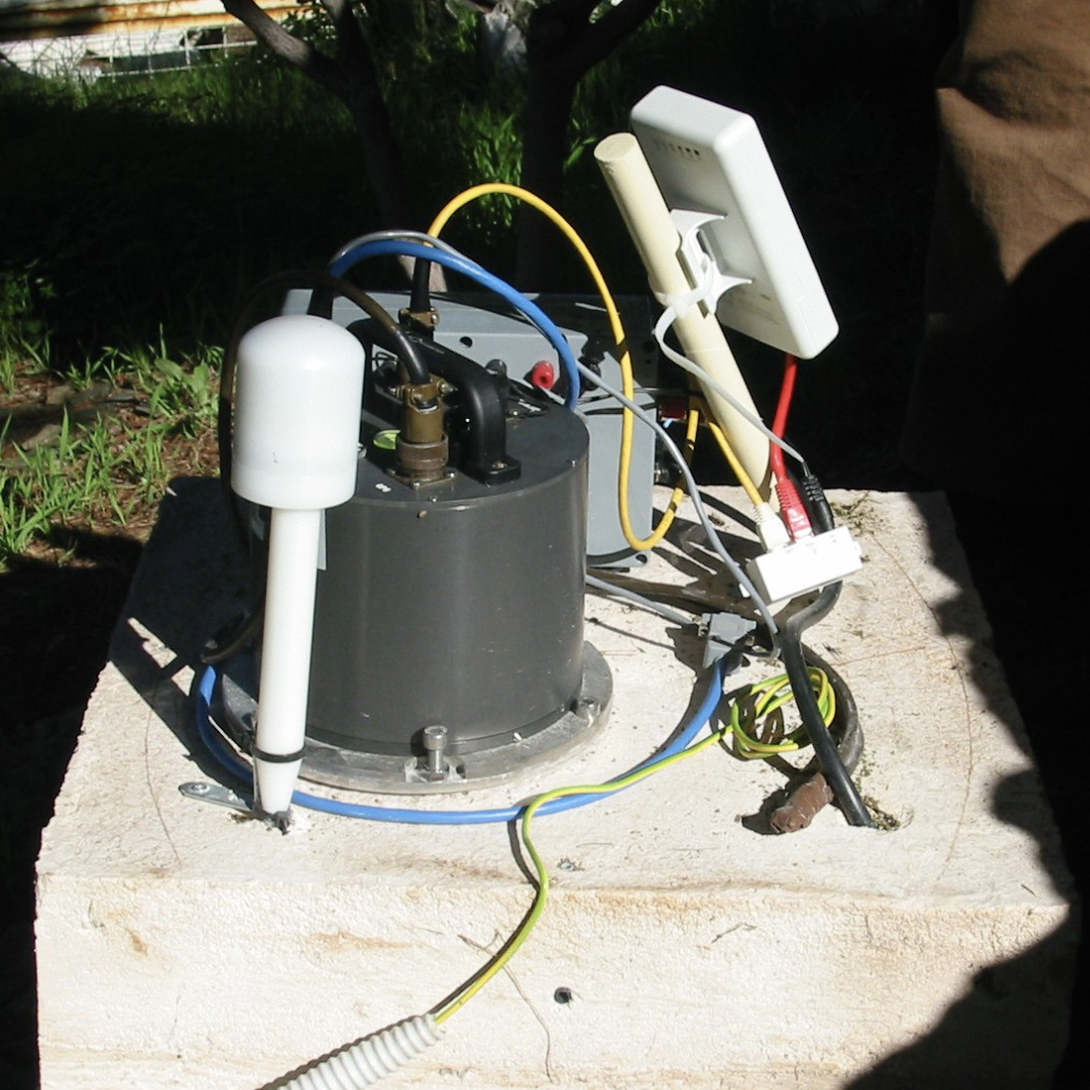
History
The Acropolis rock became a fortified citadel during the Bronze Age when inhabitants began using the land. The Myceneans then created the first defensive walls along with the Pelasgians, Greek ancestors, who built a fortress running along the wester foot of the Acropolis. In 480 B.C., these structures were heavily damaged by the Persians, after which a new 2,500-foot circuit wall was built as part of a building program in the 5th century. The north fortification wall was built with architectural members of the ruined sanctuaries, such as wall fragments, columns, drums, and blocks of metopes. The south fortification wall, built after a naval victory, is made up of marble, small stones, quarried poros blocks, and other reused building material. Despite repairs, it has remained the most authentic, giving an accurate picture of its ancient form. After several collapses, the east fortification wall has undergone various reconstructions, in addition to the constant repairs and remodeling of their functions. Medieval towers had been erected on the south and east sides of the circuit walls with rows of buttresses against the same sides. Nineteenth century interventions have resulted in major changes to the walls’ appearance, but its meaning and function retains its antiquity.
Reconstruction
The preservation and restoration of the circuit walls relies primarily on examining and censoring techniques to gather a precise database of the state in which the walls are in and over a period of time. A combination of mechanical methods, recording systems, conventional practices, and modern technological appliances are operated with daily. Using traditional methods and like inspecting cracks and removing roots and plants, the circuit walls have constantly been documented, maintained, and systemically monitored for decades. The latest advanced technology has provided the Acropolis Restoration Service with relevant information on its condition through the implementation of photogrammetric surveys, 3-D scans, optical fibers, and an underground, nickel iron wire. Geometrical documentation of these structures is essential to understanding the infrastructures and preserving its state. The optical fibers measure strains induced from mechanical or thermal actions in the various areas of the walls. They are utilized mainly in the southeast corner and certain areas in the north wall where the walls appear to be deformed most. The advanced, underground nickel iron wire, or INVAR, establishes a network of observation systems to monitor micromovements in addition to crack meters, inclinometers, and load cells for automatic and continuous recordings. Nonetheless, old-fashioned methods of optical inspection are just as imperative to the process as the other procedures. Physically surveying the areas will help teams discover and inspect deformations in the walls that instruments cannot. Today, the walls retain these practices and continue to be conserved at the upmost priority.




